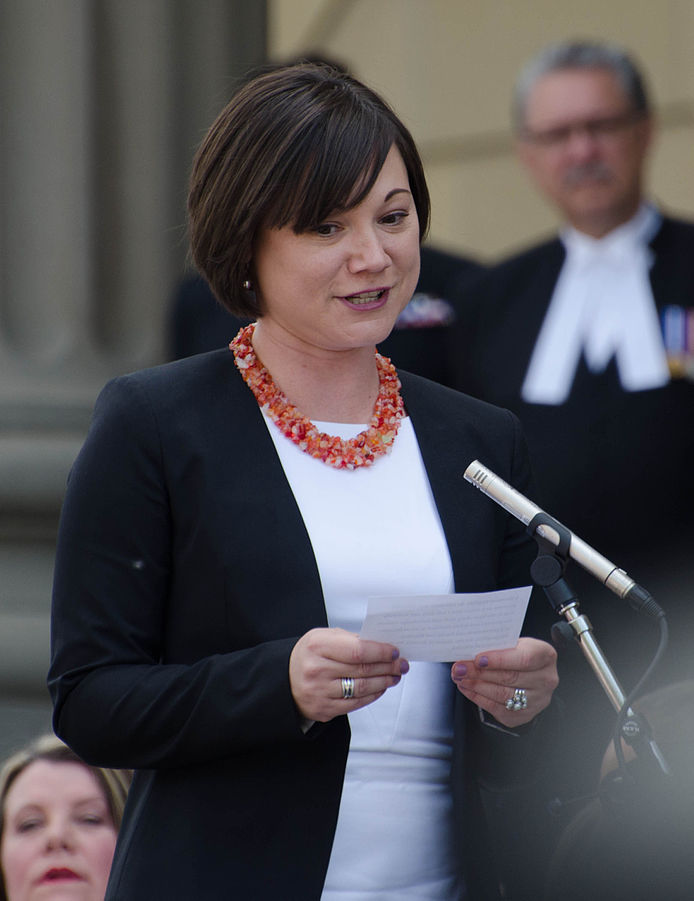Canada News
Alberta sets out plan to reduce carbon emissions from big industries

FILE: Alberta Environment Minister Shannon Phillips. (Photo by By Connor Mah – Own work, CC BY-SA 4.0)
CALGARY — Alberta has set out its competition-based plan to reduce carbon emissions from the province’s big industries, but it’s raising concerns from some about jobs and costs.
The regulations will give companies credits if their facilities produce less than a benchmark amount of emissions, while those that exceed the threshold will have to buy offsets or pay $30 for every tonne of emissions over the limit.
“The improved rules that we are releasing today will reward companies that use best practices and reward investment in modern and efficient facilities,” said Environment Minister Shannon Phillips at a news conference in Calgary Wednesday.
“That’s how we are going to create a race to the top in Alberta, by rewarding the top performers in each sector.”
The stakes for the regulations are high, since the large emitters they cover produce about half of all of the province’s emissions.
Alberta expects the new regulations to cut emissions by 20 million tonnes by 2020, and 50 million tonnes by 2030, equivalent to the emissions from about 11.5 million cars, said Phillips.
Costs are also expected to be high, with the government estimating the total value of levies per year coming in at upwards of .
2 billion annually when in full force in 2020, though offsets and credits mean the government expects to take in closer to $800 million.
The new structure, called the Carbon Competitiveness Incentives, comes into place Jan. 1, 2018 and applies to facilities like oilsands operations, cement plants and fertilizer production that produce more than 100,000 tonnes of carbon dioxide a year.
The regulations will replace the Specified Gas Emitters Regulation currently in place, and will mean a big jump in costs, said Tim McMillan, head of the Canadian Association of Petroleum Producers.
“It looks like, by our calculations, about a five-fold increase in costs to our industry from the current carbon levy. And at a time when attracting capital is challenging and we’re seeing increasing amounts of capital that traditionally came to Canada going to the U.S. and elsewhere, we’re very sensitive to cost implications.”
The opposition United Conservative Party also raised concerns about the plan, demanding the government provide clear estimates on how many jobs the policy could cost and pointing to a leaked memo that estimated the losses could be in the thousands.
“The details in this document are shocking and all Albertans, especially those employed in the oil and gas sector, should be deeply concerned about how these policies will impact our economy,” said UCP Opposition Leader Jason Nixon in a release.
To ease the transition and avoid big hits to industry, the government is phasing in the regulations, with industry paying 50 per cent of the costs next year and 75 per cent for 2019 before the full regulations take force for 2020.
The government has also committed to return some of industry’s carbon levy back to it in the form of $1.4 billion in funding announced Tuesday.
The money includes $440 million specifically for steam-based oilsands operations to improve efficiencies and reduce emissions, plus money across sectors for innovation projects, energy efficiencies and loan guarantees for emission-reduction projects.
“This whole policy was designed around the protection of jobs and ensuring companies remain competitive,” said Phillips.





















